Fire Lines is the bimonthly newsletter of the Southern Fire Exchange. Each issue briefly summarizes recent fire-related publications, projects, activities, and news.
Join our email list to receive Fire Lines by email.
Do you have news, content, or ideas for upcoming newsletters? Fire Lines is a great way to reach a wide audience of fire and natural resource managers, practitioners, and scientists across the Southeast. Please send us your ideas or a short segment (maximum 300 words) regarding
- News, recent projects, or activities
- Highlight of your organization, partnership, or group
- Field stories, successes, or challenges
- Fact sheets, articles, papers, books, guides, or other resources
- Upcoming events or past event summaries
SFE in Action:
• Supporting Prescribed Fire Councils across the Region
Research Brief:
• Terrestrial laser scan metrics predict surface vegetation biomass and consumption in a frequently burned southeastern U.S. ecosystem
What’s New in Fire Science?
• Carbon Sequestration in Longleaf Pine Ecosystems
• Removing Duff Layers in Fire-Suppressed Wetlands Can Aid Habitat Restoration Efforts for Amphibians
Bonus Section:
• Prescribed Fire and Ticks
SFE in Action:
• New SFE Fact Sheet: Prescribed Fire as a Tool for Controlling Tick Populations in the Southeastern US
• SFE Video: Smoke, Air Quality, & Public Health
Research Brief:
• Midstory removal of encroaching species has minimal impacts on fuels and fire behavior regardless of burn season in a degraded pine-oak mixture
What’s New in Fire Science?
• Prescribed Fire History Affects Pollinator Diversity in Southern Forests
• Heading and Backing Fire Behaviors Mediate the Influence of Fuels on Wildfire Energy
Bonus Section:
• Wildland Fire Safety
Research Brief:
• A spatially explicit model of tree leaf litter accumulation in fire maintained longleaf pine forests of the southeastern US
What’s New in Fire Science?
• Carbon Storage in Longleaf Pine Ecosystems
• Firebirds of the Marsh
• Summer May Be the Time to Burn Wetlands
Tools and Technology
• Southern Region Prescribed Burn Accomplishment Tracker
SFE Updates:
• New Video: The Integrated Research Management Team – Research Burns at Fort Stewart
Bonus Section
• Fuel Treatments
Research Brief:
• Fuel treatment effectiveness at the landscape scale
What’s New in Fire Science?
• The Impact of UAS Aerial Ignition on Prescribed Fire
Tools and Technology
• Bobscapes: A Mobile App to Track Northern Bobwhite
• Tools for Engaging Landowners Effectively
SFE Updates:
• New Video: The Integrated Research Management Team – Advancing Fire Science through Collaboration
• SFE Live from the Field goes to the North Carolina WTREX
Bonus Section
• Women in Fire
Research Brief:
• Season of prescribed burns and management of an early successional species affect flower density & pollinator activity in a pine savanna ecosystem
SFE Updates:
• SFE on Instagram
• SFE Reddit AMA with Dr. Monica Rother
What’s New in Fire Science?
• A Collection Action Approach to Prescribed Fire Agreements
• Management and Climate Variability Effects on Understory Productivity of Forest and Savanna Ecosystems
Bonus Section
• Prescribed Fire Liability
Research Brief:
• Altered cyclone-fire interactions are changing ecosystems
SFE Updates:
• New UF IFAS EDIS Fact Sheet: Fire and Invasive Plant Interactions
• SFE Live from the Field: Protecting Giant Sequoias from the Ground Up
What’s New in Fire Science?
• Prescribed Fire Can Reduce Ticks and Tick-Borne Disease Prevalence
• Sociodemographic and Environmental Justice Aspects of Wildfire Literature
• Effects of Groundcover Seeding on Understory Community, Fire Behavior, and Soil
Research Brief:
• Fire exclusion and fire return interval affect small mammal populations in longleaf pine forests
New SFE Fact Sheets:
• Bees and Fire: How Does Fire in Longleaf Pine Savannas Affect Bee Communities?
• New SFE Podcast Episode: Developing an Effective Communication Plan to Help Drive a Successful Burn Program
• New Prescribed Fire Training Course for Fire Managers in the Southeast
What’s New in Fire Science?
• Collaborative Research Burn Showcases Prescribed Burn Program and Overcomes Barriers to Fire Science Research
• Small Mammal Responses to Fire Severity Mediated by Vegetation Characteristics and Species Traits
• A Review of Air Quality & Public Health Implications of Wildfire and Prescribed Fire
Research Brief:
• Longleaf pine restoration on hydric sites: Understorey plant community responses to site preparation through 15 years
New SFE Fact Sheets:
• Using Fire to Manage for Oak Regeneration in Eastern and Southeastern U.S. Oak-Hardwood Ecosystems
• Hurricane and Tropical Storm Impacts on Prescribed Fire and Wildfire Management Practices
• Where There’s Fire, There’s Smoke: Air Quality and Prescribed Burning in Florida
What’s New in Fire Science?
• Does Prescribed Fire Threaten Quail Nests?
• Air Quality Impacts of Duff and Peat Burning from Wildfires in the Southeast
Research Brief: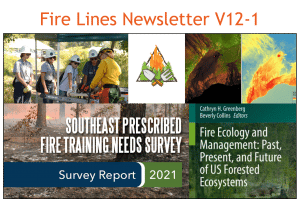
• Temporal and scalar variations affect resource use of northern bobwhite broods
SFE Updates:
• New SFE Webinar Summary: Potential Impacts of Prescribed Fire Smoke on Air Quality, Public Health, and Socially Vulnerable Populations in the Southeastern US
• New SFE Fact Sheet: Accessing Wildland Fire Research: A Guide for Fire Practitioners
What’s New in Fire Science?
• New Fire Books: Global Application of Prescribed Fire and Fire Ecology and Management: Past, Present and Future of US Forested Ecosystems
• Longleaf Restoration Improves Streamflow During Drought
• Without Fire, Trees May Be More Susceptible to It
Other News
• Results of the Southeast Prescribed Fire Training Needs Survey
• New Wildfire-Fighting Program for Girls Aims to Bring More Gender Diversity to the Profession
• New Online Course to Help Farmers Build Fire Resilience
Research Brief:
• Longleaf pine seedling growth and survival: Effects of season and intensity of simulated prescribed burning
SFE Updates:
• New Florida Bonneted Bat Fire Science Success Story
What’s New in Fire Science?
• N95 Respirators Could Offer Robust Protection from Wildfire Smoke
• Bat Activity Response to Fire Regime Depends on Species, Vegetation Conditions, and Behavior
• Tree Encroachment Impacts on Seed Predator Selection and Seedling Establishment
New Technology and Tools
• Fire Modeling Tools Advance with Collaboration between Southeastern and Western Scientists
Research Brief:
• Frequent Prescribed Fire Sustains Old Field Loblolly Pine–Shortleaf Pine Woodland Communities: Results of a 53-Year Study
SFE Updates:
• New “Beginning Burner Webinars” Playlist on SFE YouTube Channel
• New Southern Fire Science Video
• Updated “Maps and Weather” Page on SFE Website
• New SFE Fact Sheet: “Prescribed Fire in Georgia: Frequently Asked Questions”
What’s New in Fire Science?
• A New Field of Science: Pyroaerobiology
• Multidecadal Effects of Fire in a Grassland Biodiversity Hotspot: Does pyrodiversity enhance plant diversity?
Research Brief: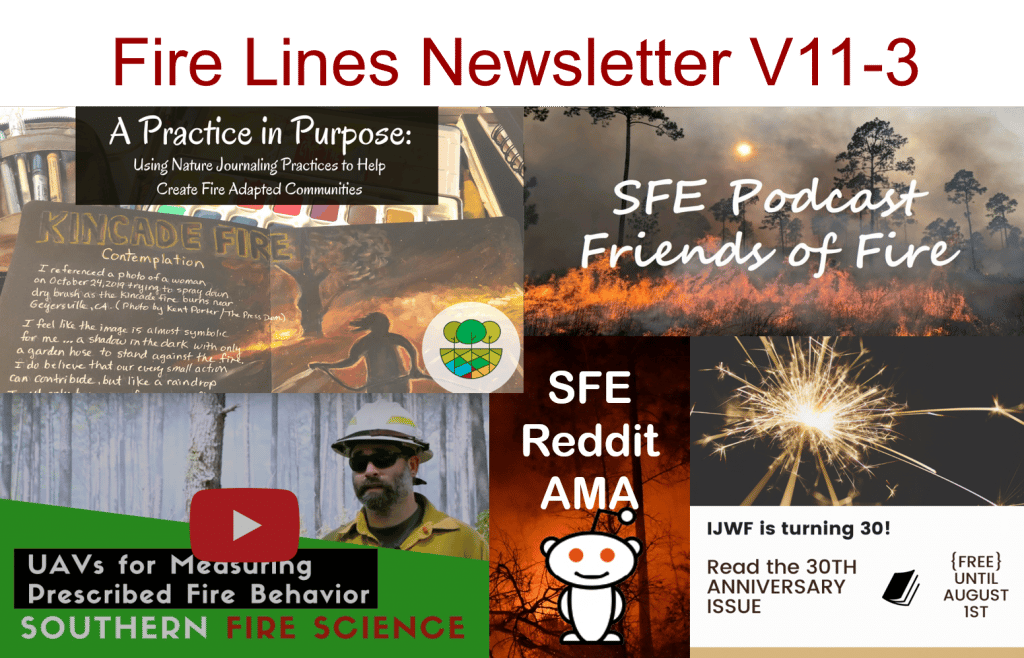
• Mesophication of Oak Landscapes: Evidence, Knowledge Gaps, and Future Research
SFE Updates:
• New Podcast Episode: “Call-When-Needed Fire Crew Model – Part 1”
• New SFE Southern Fire Science Video: UAVs for Measuring Prescribed Fire Behavior
What’s New in Fire Science?
• Prescribed Fire Effects on Soil, Water and Vegetation
• Remote Sensing Techniques to Assess Post-fire Vegetation Recovery
• Forest Management & Bats
Other News:
• Introduction to Prescribed Fire Online Training Course
Research Brief:
• Spatial scale in prescribed fire regimes: an understudied aspect in conservation with examples from the southeastern United States
SFE Updates:
• New SFE Fact Sheet: Wildland Fire and Climate Change Impacts in the Southern US
• Southeast Students in Fire
What’s New in Fire Science?
• U.S. Geological Survey Wildland Fire Science Strategic Plan, 2021–26
• Prescribed Burns & Low-intensity Fires are Highly Responsive to Changes in Winds
• Identifying Drivers of Bird Populations Following Prescribed Fires
Other News:
• Nominate an Individual or Group to be Featured in Wildfire Magazine
• Wildland Firefighter Mental Health Survey
• 2021 Society of American Foresters National Convention Call for Proposals
Research Brief:
• Improving Coastal Plain Hardwoods for Deer and Turkeys with Canopy Reduction and Fire
SFE Updates:
• New Smoke Management Guide for Prescribed Fire
• New Fire Science Success Stories Page
What’s New in Fire Science?
• Blueprint for Wildland Fire Science Collaboration Across North America
• Prescribed Fires May Mean Safer Smoke
• Two New Fire Science Books Recently Published
Other News:
• 2020 National Prescribed Fire Use Report
Research Brief:
• The Influence of Prescribed Fire on Site Selection in Snakes in the Longleaf Pine Ecosystem
SFE Updates:
• New SFE Podcast: “Friends of Fire”
• New Fact Sheet: Perceptions of Prescribed Fire Risk, Liability, and Insurance
• 2020 Florida Statewide Prescribed Fire Council Meeting: Most highly attended PFC meeting in history!
What’s New in Fire Science?
• Fire for Human Disease Prevention
• Fire May Benefit Microbes in Pine Rocklands
• Thinning and Prescribed Fire Treatments Reduce Tree Mortality
Research Brief:
• The “Efficiency Concern”: Exploring Wildfire Risk on Heirs’ Property in Macon‑Bibb County, Georgia, United States of America
Whats New:
• SFE launches a new regional fire science publication database. Now available on the SFE website and Zotero.
Whats New in Fire Science:
• Prescribed Fire Does Not Hinder Forests from Producing Clean Water
• The Role of Climate and Indigenous People in Molding the Ecological Landscape
• Proposed Downlisting of the Red-Cockaded Woodpecker Under Endangered Species Act
Research Brief:
• Climate Change Projected to Reduce Prescribed Burning Opportunities in the South-eastern United States
Whats New in Fire Science?
• Effects of Fire on Grassland Soils and Water
•Low-Severity Fires Enhance Long-Term Carbon Retention of Peatlands
Other News:
•Fire Protection Research Foundation Project – Female Firefighter PPE Survey Opportunity
•COVID-19 Prevention and Management During Wildland Fire Operations
Research Brief:
• North Carolina Climate Science Report: Implications for Wildland Fire
Whats New in Fire Science?
• Timing Prescribed Fire to Maximize Longleaf Pine Growth
• Thinning Forests or Prescribed Fire Before Drought Reduced Tree Loss
SFE Fire Lines Newsletter Wins 2020 Gold ANREP Award
Whats New In Fire Science?
• Forest Duff Must be Considered in Controlled Burning to Avoid Damaging Trees
• Prescribed Burns Benefit Bees
Resarch Brief
•Prescribed fire science: the case for a refined research agenda
Research Brief: The impacts of prescribed fire on wild turkey behavior
Managing Drought in Forest Ecosystems
Wildfire Smoke, Once Considered Sterile, Teems with Life
Wildfire May Help Bats Adapt to Climate Change and White-Nose Syndrome
Patterns of Longleaf Pine Establishment in Wiregrass Understories
Map Values with IFTDSS
DOD Interactive Map
Research Brief: Longer Dry Seasons Could Lengthen Fire Seasons in the Southeast
New Landscape Burn Probability Model: Created by the Interagency Fuel Treatment Decision Support System
FIREX-AQ: Provides comprehensive observations to investigate the impact on air quality and climate from wildfires and agricultural fires.
Research Brief: Is Prescribed Fire Good for Sequestering Carbon?
New Technology and Tools: Researchers Developing App for Safety Zones, Escape Routes
SFE Updates: Upcoming SFE Workshops
We’ve got a new look! Fire Lines is no longer distributed as a PDF newsletter.
New Research Reveals Critical Differences in Pine and Saw Palmetto Fine Dead Fuel Moisture Dynamics
WTREX Held at Tall Timbers Research Station
New Insights into Longleaf Pine Natural Regeneration
Southeast Prescribed Fire and Smoke Management Summit IV
Longleaf Challenge Connects Scouts, Adults, and Fire
SFE Meets with Partners and Regional Exchanges in DC
Pyroaerobiology: the start of a new microscopic frontier in fire ecology?
2019 SFE workshops and webinars
Fourth National Climate Assessment: climate change impacts on wildland fire in the South
Ecosystem response to hurricanes workshop
Measuring wildfire vulnerability with a social-ecological approach
New fire science publications relevant to the South
Fire After Hurricanes: What Does the Research Say?
Women and Diversity in Fire Science
JFSP Projects Release Final Reports
The number of large wildfires across the US has increased due to Human Ignitions
SFE releases two new factsheets
Forest landowners get experience in prescribed fire
Get certified as a Wildland Fire Professional by AFE
Learn about new fire science publications relevant to the South
Two new factsheets from Southern Fire Exchange
Burned Forests Impact Water Supplies
New video on Florida Scrub Fire
New Issues of two international wildland fire journals
Frequent fires eliminate production of fleshy fruits in longleaf pine
Not every day is a burn day: Predicting good burn days
Call for presentations for 12th Biennial Longleaf conference
New training opportunities
Do fuel treatment cost affect wildfire suppression costs and property damage?
Snags and Prescribed Fire- Are They Related?
Updated Fire Weather Intelligence Portal
Scientists and Managers Learn about Duff Fire Management at Recent SFE Workshop
Fine fuels longleaf restoration
Snags and prescribed fire
Intro to new outreach specialist
Simple Smoke Model tool is back and better than ever
Is Precision Hurting Conservation?
Are Oaks Actually Helping Longleaf to Survive?
RxScience Launches with Collaborative Burn Event at Tall Timbers
Tools Designed for Managers in the Southeast
Updated IFTDSS Is Now Available!
New LANDFIRE Practitioners’ Guide
Effects of Repeated Growing Season Burns in the Piedmont Region
More on Shortleaf Pine Integrity: Post-fire Resprouting
Duff Consumption and Post-Fire Longleaf Pine Mortality
New Health Resources for Wildland Fire Smoke
Save the Date: 2017 AFE Fire Congress in Orlando
Cohesive Strategy and the 2016 Fall Fire Season
SimpleFM: New Fine Dead Fuel Moisture Calculator
NCSU Researchers Working to Improve Fire Shelters
Fire Ecology and Eastern Oaks

Climate Change and Southeastern Fire Potential Revisited
DEET Reduces Flame Resistance of Nomex
Save the Date for Your State’s PFC Meeting
View into the Field: Recap of Recent Learning Events
JFSP Funded Projects for 2016
Fire Ecology Database News
Variability Is Key for Promoting Wildlife Foods in Longleaf Pine
Longleaf Pine Management and Southeastern Fox Squirrels
Mark Your Calendars for Spring SFE Events

2013 ACMF Forest Prescribed Fire
Influence of Liability and Regulatory Standards on Burning
2015 National Prescribed Fire Use Survey Report
RxCADRE Results Shared in Special IJWF Issue
Prescribed Fire Risk on Private Lands
Smoke and Socially Vulnerable Populations
International Wildland Fire Conference Highlights
Prescribed Fire Reduces Wildfire Activity over Time
Season of Burn Research Highlights
Recap of the Prescribed Fire Communications Summit
Feedback Relationships: Fire and Brazilian Pepper in Pine Savannas
Fire, Cogongrass, and Longleaf Pine Forest Restoration
Resources on Fire and Invasive Species

Climate, Weather, and Large Fires
Regional Fire Potential Forecast
Fire and Weather: Resources for Managers
Prescribed Fire Trends, Effectiveness, and Impediments
Effects of Fire Environment on Particulate Matter
Regular Fire Maintains Shortleaf Pine Integrity
Defensible Space: How Much Is Necessary?
Partner Spotlight: America’s Longleaf Restoration Initiative
Season of Burn Effects: Another Resource
Fire and Birds in the Southeast
Reproductive Success of Wild Turkeys in Frequently Burned Longleaf Pine Forests
Partner Spotlight: Florida Scrub Working Groups
Fire in the Wildland-Urban Interface
WUI and Risk Assessment Resources
Looking Ahead: Fire in the South in 2060
Prescribed Fire Surrogates in the South
Partner Spotlight: Southeast Regional Partnership for Planning and Sustainability (SERPPAS)
Herbicide Effects on Longleaf Regeneration and Fire Management
Fuel Treatments in Pine Flatwoods: A Photo Series Guide
Partner Spotlight: Chattahoochee Fall Line Conservation Partnership
Vegetation Treatment Options in Longleaf Pine Sandhill

USFWS Symposium Recap: Wetlands, Fire, and Climate Change
Partner Spotlight: National Woodland Owners Association
VSmoke Web: Smoke Modeling Made Easy
Research Highlight: Wood Smoke, Oxidative Stress, and Wildland Firefighters
Partner Spotlight: NWCG Smoke Committee (SmoC)
Prescribed Fire Smoke Management Questions? There’s an App for That
Fuel Consumption Models for Pine Flatwoods Fuel Types
Climate Change and Southeastern Fire Potential
Partner Spotlight: USFS Region 8, Fire and Aviation Management
Amphibian and Reptile Responses to Thinning and Prescribed Burning
Bird Response to Restoration Treatments in Longleaf Pine Forests
Managing Pine and Hardwood Cover for Sherman’s Fox Squirrels
New! SFE Spotlight Series
Effects of Windstorms and Fire on River Cane
Response of Wading Birds to Prescribed Fire in the Everglades
Flatwoods Species Responses to Restoration Treatment
WUI Fire Risk
Partner Spotlight: Longleaf Alliance
BMPs for Community Wildfire Protection Planning
Partner Spotlight: Southern Group of State Foresters
Workshop Summary: Monitoring Trends in Burn Severity
Partner Spotlight: The Association for Fire Ecology
SAFE Spreading the Fire Message
Research Breakthroughs in Fuels, Fire Behavior, and Mitigation
SFE Webinar: Mark Your Calendar for October 5th
Workshops in Raleigh: February 18, 2013
Partner Spotlight: US DoD, Eglin Air Force Base
Fire and Saw Palmetto
Cohesive Strategy: Phase II Report
Partner Spotlight: Southern Regional Extension Forestry
Wildfire Suppression Strategies and Cost
Smoke Management in Prescribed Burning
Partner Spotlight: The Nature Conservancy
Fire Effects on Reptiles and Amphibians
Wildfires and Home Ignitions: Life Size Testing Indoors
Partner Spotlight: FRAMES
Prescribed Fire: A Necessity for Restoring Longleaf Pine
Rx-Cadre: A Novel Approach to Wildland Fire Research
Partner Spotlight: National Park Service
Fire History in Southeastern Ecosystems
Air Quality Education Tools
Partner Spotlight: Prescribed Fire Councils
Education and Training Opportunities This Fall
Requesting Your Input
Partner Spotlight: American Forest Foundation
One Message, Many Voices
Partner Spotlight: Southeast Fire Ecology Partnership
Online Resource: Fire Research Institute
Back Fires Sequester More Carbon than Head Fires
Climate Change and Wildfire in the South
Partner Spotlight: Prescribed Fire Training Center
Approximating Post-Hurricane Fuel Loads
Community Perceptions of Fuel Treatments
Partner Spotlight: The Jones Center
JFSP Knowledge Exchange Consortia
Providing Input for Fire Research
JFSP Invests in the Future with AFE Grant
SFE Resource Center Goes Live
When to Conduct Prescribed Burns?
Online Resources: Treesearch and Lessons Learned Center
Economic Benefits of Wildfire Prevention Education
First Ever National Wildland Fire Certification Program
Online Resources: JFSP and Southern Fire Portal
New Fire Planning Tool (IFT-DSS)
Weather Forecasts for Prescribed Burning
Online Resources: Fire Ecology Database and ESFS

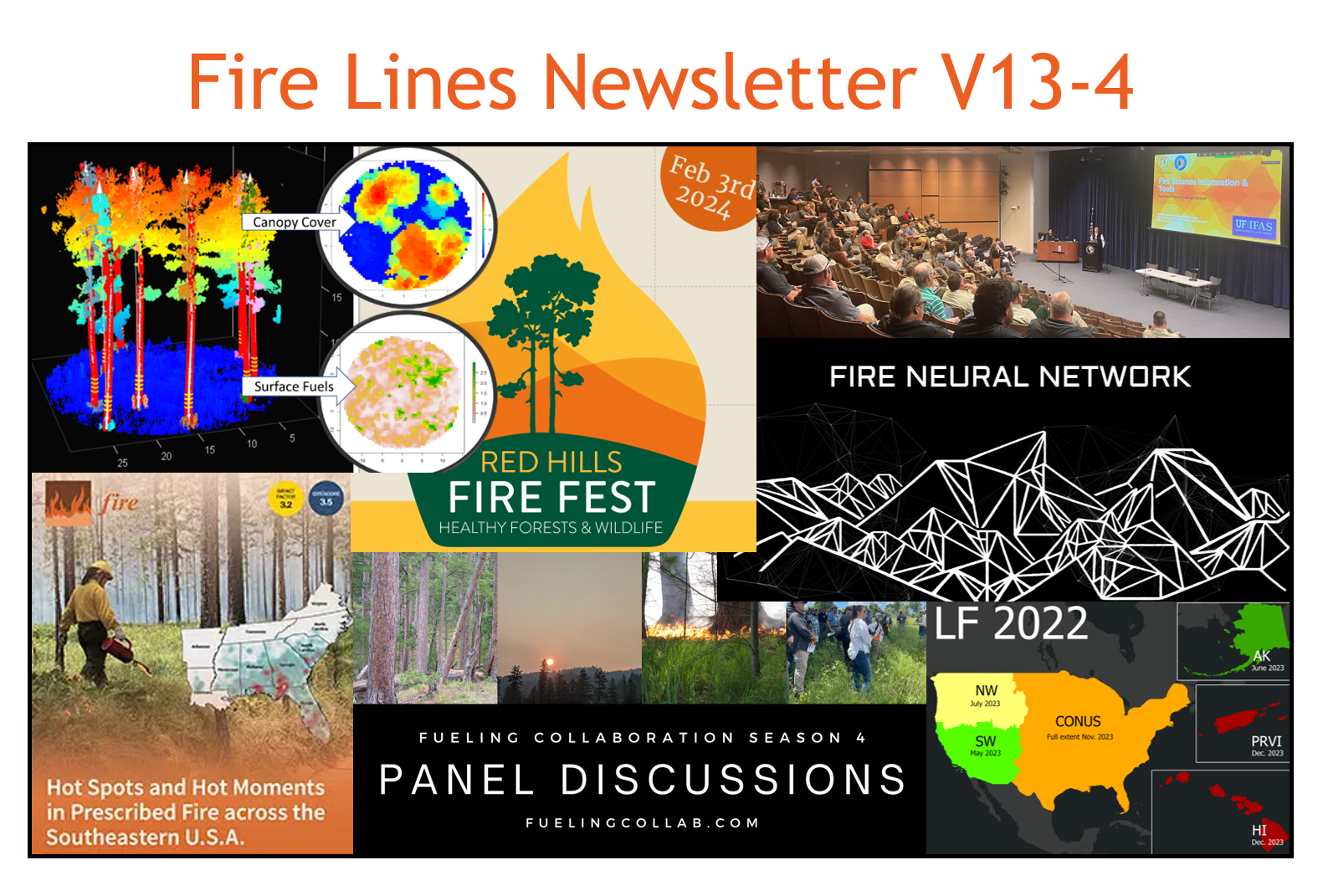
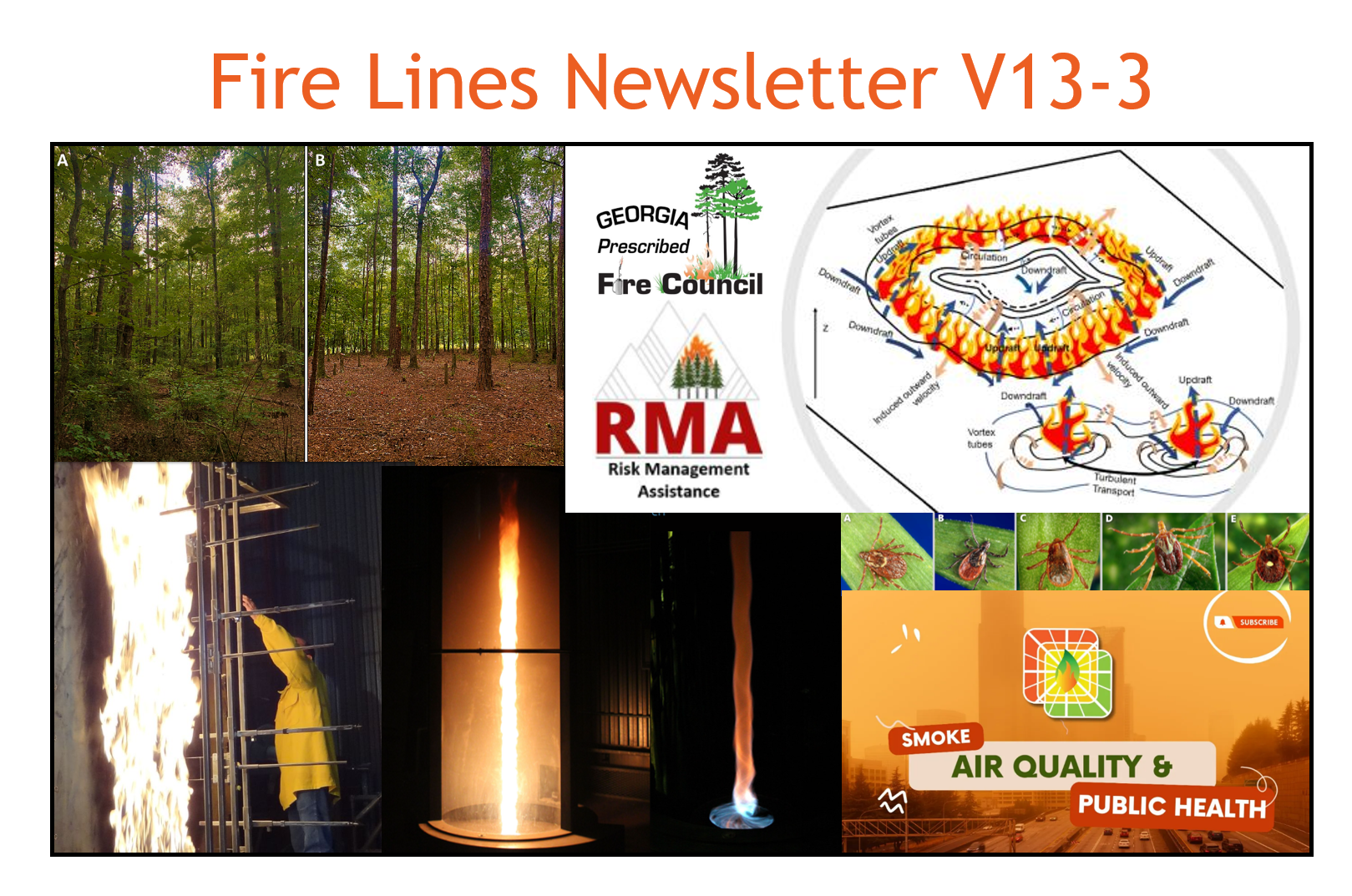

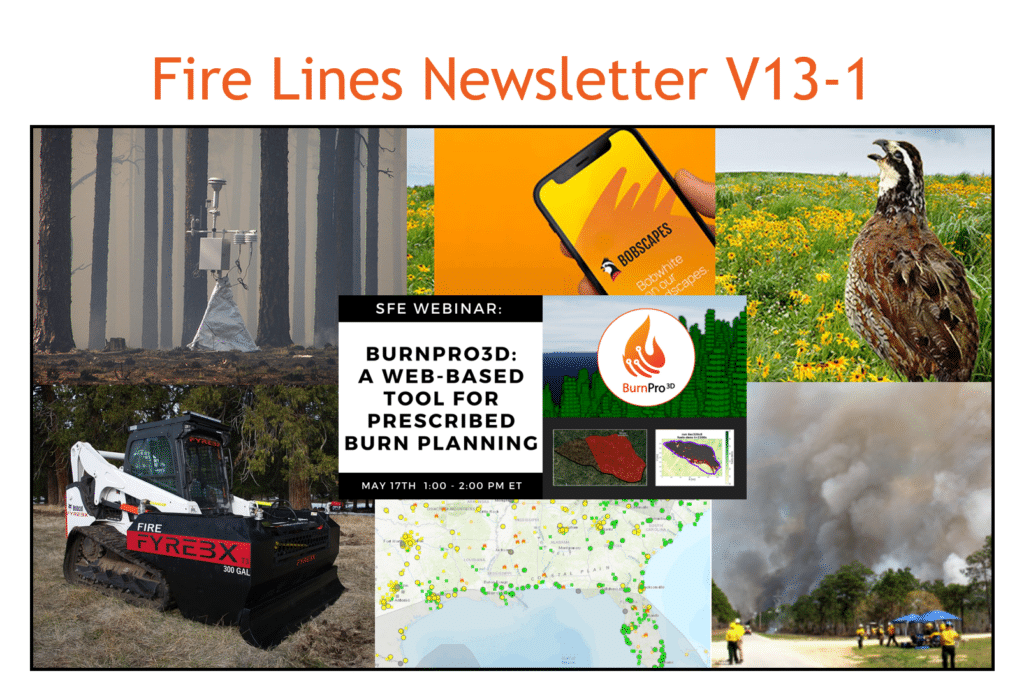
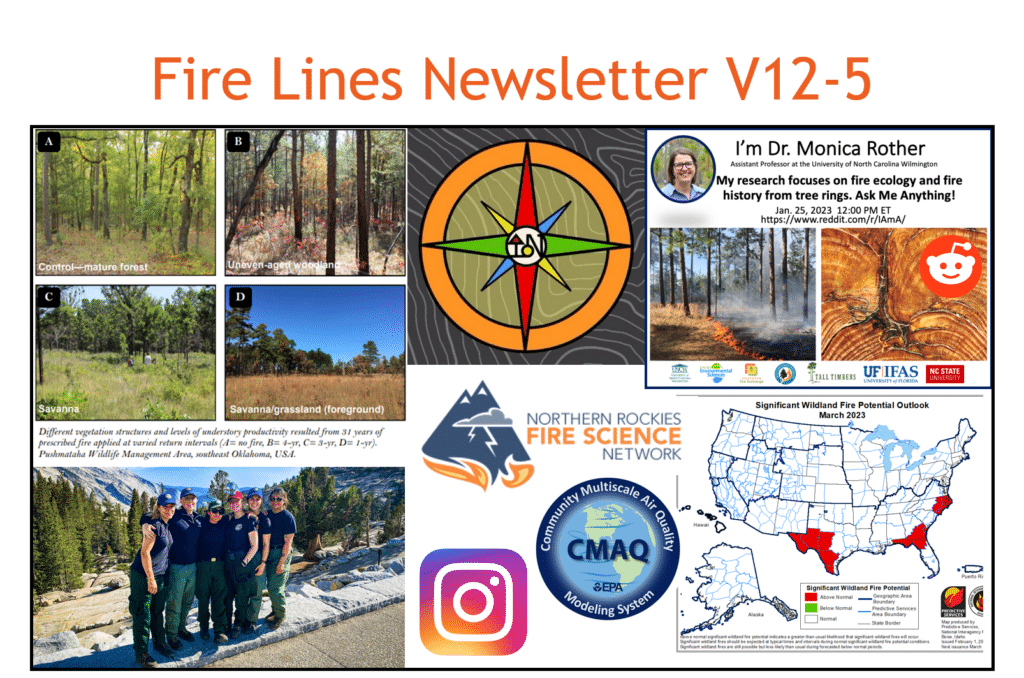
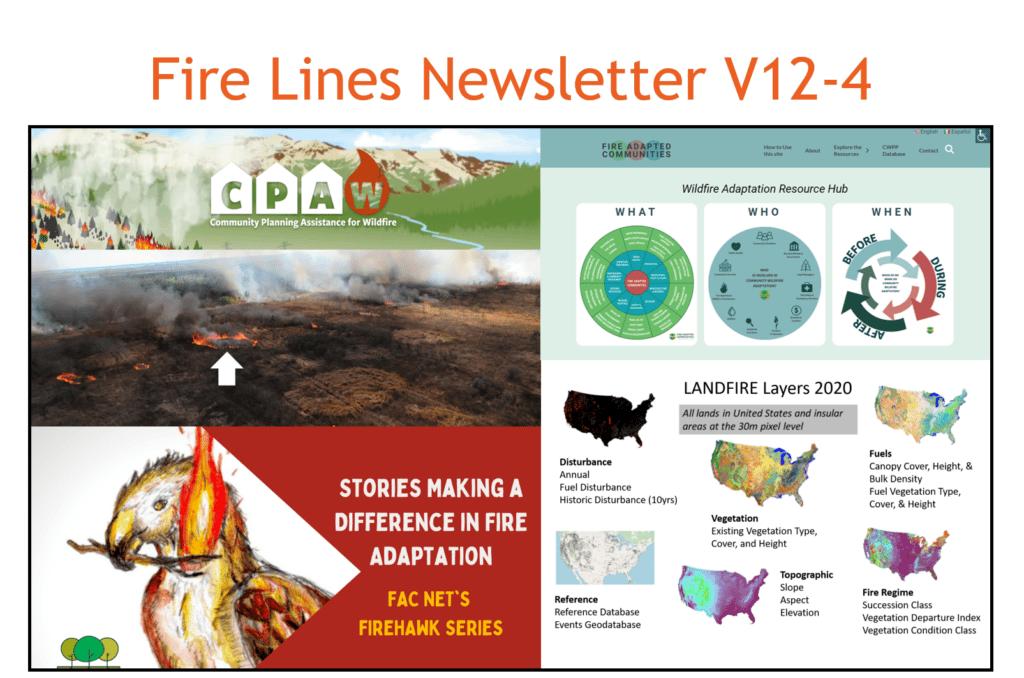
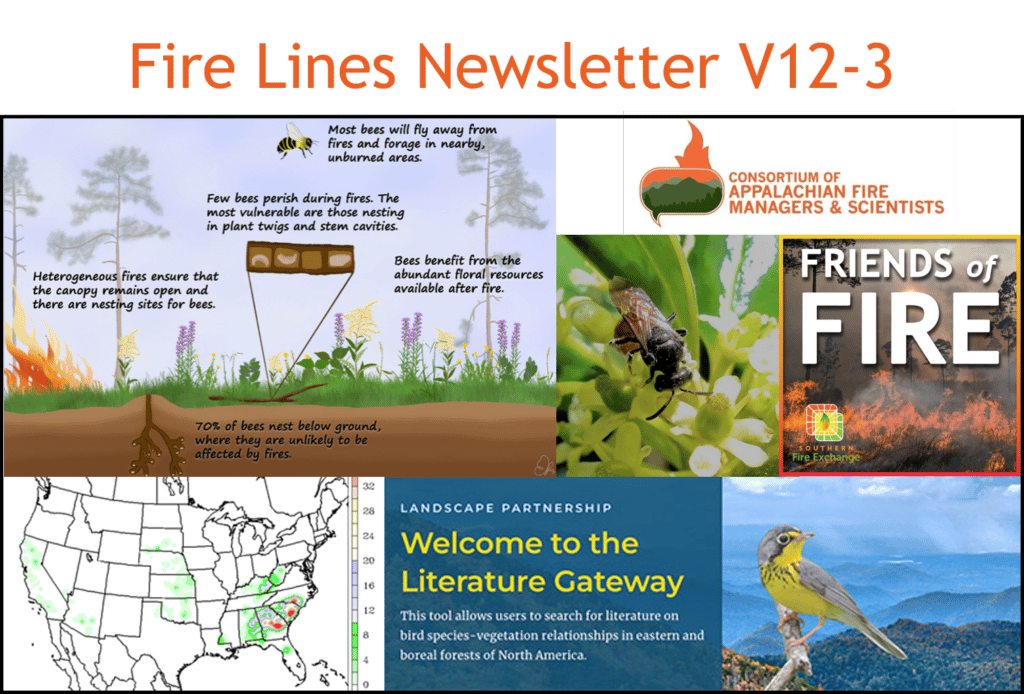
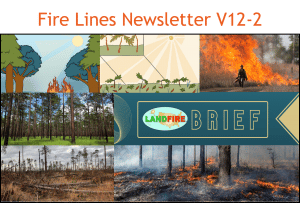
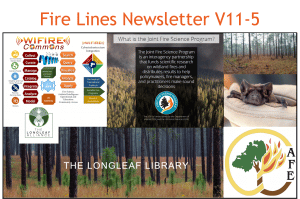
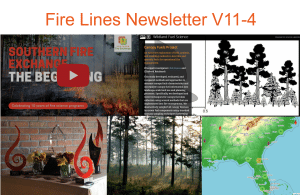
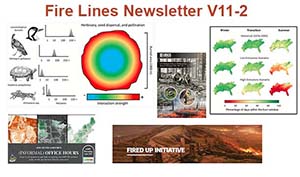
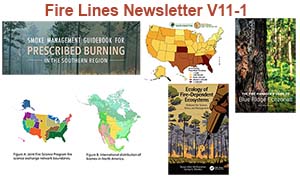
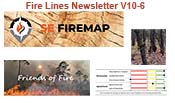
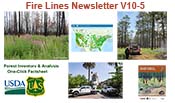
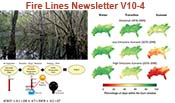
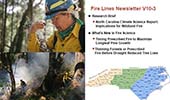
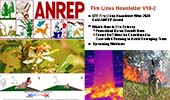







 October 2018
October 2018 August 2018
August 2018 May – June
May – June March – April
March – April January – February
January – February September – October
September – October July – August
July – August June
June April
April November – December
November – December September – October
September – October May – June
May – June March – April
March – April November
November October
October August
August March
March February
February November – December
November – December September – October
September – October July – August
July – August May – June
May – June January – February
January – February September – October
September – October July – August
July – August May – June
May – June March – April
March – April January – February
January – February November – December
November – December September – October
September – October July – August
July – August May – June
May – June March – April
March – April January – February
January – February November – December
November – December September
September August
August July
July June
June May
May April
April March
March February
February



